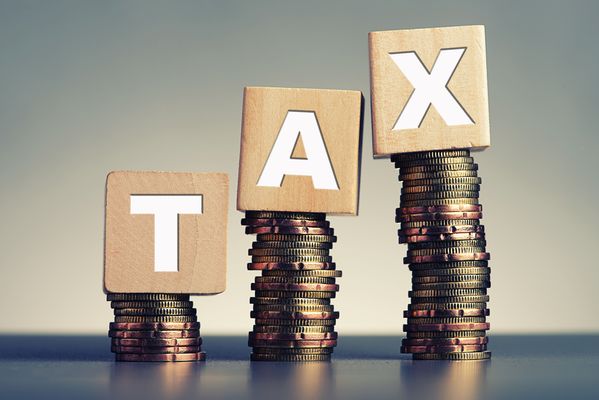8.1.5
Government Policy on Poverty
Government Policies to Alleviate Poverty
Government Policies to Alleviate Poverty
Poverty is undesirable for governments as it leads to significantly reduced welfare and also has spillover effects (negative externalities) in terms of crime and health care.


Progressive taxation
Progressive taxation
- Progressive taxes are designed so that the higher your income is, the higher the proportion of your income you pay in tax.
- So the rich pay proportionately more tax than the poor.
- This reduces the inequality in income and wealth.


Stimulate economic growth
Stimulate economic growth
- Governments can generate economic growth using expansionary policies. This can be used to try to get people out of poverty.
- This should also create jobs.
- This should mean workers get higher wages and the government should collect higher tax revenue in return.
- But this is difficult and inequality could worsen.


Minimum wages
Minimum wages
- A minimum wage could also be used to try to guarantee that workers receive a fair wage and can afford the basic needs.
- A minimum wage can also stop monopoly employers from paying workers too little and putting them in poverty.
- Or a benefits system could be used.


Benefits
Benefits
- Governments pay benefits to those who are unable to support themselves due to being out of work, suffering from long-term illness or for several other reasons.
- Benefits are an example of transfer payments and are funded through taxes.
- Benefits are designed to prevent people from living in absolute poverty by meeting the cost of needs. By providing enough to ensure food, shelter and other essentials and for those who are temporarily unemployed it means they are fit enough to return to work.


State provision
State provision
- State provision means that those goods and services which are deemed essential by the government are available for all regardless of income or wealth.
- By providing schooling, children are given a more equal start in life regardless of their family background.
- Without adequate schooling, the children themselves are limited in what jobs they can do when they are older which may keep them in poverty. They would also bring fewer skills to the workforce making the country less productive.
Economic Consequences of Government Policies to Help Poverty
Economic Consequences of Government Policies to Help Poverty
There are a number of positive and negative consequences to government policies for tackling poverty:


Effects of progressive taxation
Effects of progressive taxation
- Progressive taxation can have unintended consequences.
- By increasing the tax on higher income brackets, you are discouraging workers from earning more money.
- The gain from working might not be as great as the loss of benefits from moving up an income bracket.
- So progressive taxation can reinforce the poverty trap.


Effects of economic growth
Effects of economic growth
- Economic growth is not a simple way to alleviate poverty effectively. It must be carefully managed.
- It can also impact the environment by using up scarce resources.


Effects of a minimum wage
Effects of a minimum wage
- In a perfectly competitive labour market, the introduction of a minimum wage can increase the levels of unemployment.
- A national minimum wage underestimates the cost of living differentials across a country.
- So a national minimum wage could be better for people who live in cheaper areas than for people who live in more affluent areas.
- But the presence of a minimum wage could incentivise work.


Effects of the benefits system
Effects of the benefits system
- The benefits system can disincentivize work.
- This is bad for productivity and the economy.
- Benefits that are means tested can also lead to a worsening of the poverty trap.
- If people think that their benefits will go down if their income increases, they may intentionally not go up an income bracket.
1Introduction to Markets
1.1Nature of Economics
1.1.1Economics as a Social Science
1.1.2Positive & Normative Economic Statements
1.1.3The Economic Problem
1.1.4Resources
1.1.5Production Possibility Frontiers
1.1.6Specialisation & Division of Labour
1.1.7Types of Economies
1.1.8End of Topic Test - Nature of Economics
1.1.9Application Questions - Nature of Economics
1.2How Markets Work
1.2.1Rational Decision Making
1.2.2Demand
1.2.3Elasticities of Demand
1.2.4Elasticities of Demand 2
1.2.5Elasticity & Revenue
1.2.6Supply
1.2.7Elasticity of Supply
1.2.8Price Determination
1.2.9Price Mechanism
1.2.10Consumer & Producer Surplus
1.2.11Indirect Taxes & Subsidies
1.2.12A-A* (AO3/4) - Taxing Prices or Quantities?
1.2.13Alternative View of Consumer Behaviour
1.2.14End of Topic Test - Markets
1.2.15A-A* (AO3/4) - Markets
2Market Failure
2.1Market Failure
2.2Government Intervention
2.2.1Government Intervention in Markets
2.2.2Subsidies & Price Controls
2.2.3Pollution Permits & Regulation
2.2.4A-A* (AO3/4) - European Emissions Trading
2.2.5State Provision & Information Provision
2.2.6Government Failure
2.2.7End of Topic Test - Government Intervention
2.2.8A-A* (AO3/4) - Government Intervention
3The UK Macroeconomy
3.1Measures of Economic Performance
3.1.1Measuring Economic Growth
3.1.2National Income Data
3.1.3Inflation
3.1.4Causes of Inflation
3.1.5Consequences of Inflation
3.1.6Employment & Unemployment
3.1.7Causes & Impact of Unemployment
3.1.8A-A* (AO3/4) - Hysteresis
3.1.9Balance of Payments
3.1.10Current Account Deficit & Imbalances
3.1.11End of Topic Test - Economic Performance
3.1.12Application Questions Macroeconomy
3.2Aggregate Demand
3.3Aggregate Supply
3.4National Income
4The UK Economy - Policies
4.1Macroeconomic Objectives & Policies
4.1.1Possible Objectives
4.1.2Demand-Side Policies - Monetary
4.1.3Demand-Side Policies - Monetary 2
4.1.4A-A* (AO3/4) - The Future of Interest Rates
4.1.5Demand-Side Policies - Fiscal
4.1.6Demand-Side Policies in 2007-08
4.1.7Strengths & Weaknesses of Demand Side
4.1.8Supply-Side Policies
4.1.9Supply-Side Policies 2
4.1.10Conflicts Between Objectives
4.1.11A-A* (AO3/4) - Conflicting Incentives
4.1.12Phillips Curve
4.1.13End of Topic Topic - Policies & Objectives
4.1.14Application Questions - UK Policies
5Business Behaviour
5.1Business Growth
5.2Business Objectives
6Market Structures
6.1Market Structures
6.1.1Efficiency
6.1.2Perfect Competition
6.1.3Perfect Competition 2
6.1.4Monopolistic Competition
6.1.5Oligopolies
6.1.6The Prisoner's Dilemma
6.1.7Collusion in Oligopolistic Markets
6.1.8A-A* (AO3/4) - Which Factors Affect Collusion?
6.1.9Monopolies
6.1.10Price Discrimination
6.1.11Monopsony
6.1.12A-A* (AO3/4) - Models in Economics
6.1.13Contestability
6.1.14Benefits of Contestability
6.1.15End of Topic Test - Market Structures
6.1.16Application Questions - Market Structures
6.1.17A-A* (AO3/4) - Cereal Collusion
6.2Labour Market
6.2.1Demand for Labour
6.2.2Supply of Labour
6.2.3Labour Market Imperfections
6.2.4A-A* (AO3/4) - Labour Productivity & Unemployment
6.2.5A-A* (AO3/4) - What Level of Unionisation is Good?
6.2.6Wage Determination
6.2.7Elasticity of Labour Supply & Demand
6.2.8Intervention in Setting Wages
6.2.9End of Topic Test - Labour Market
6.2.10A-A* (AO3/4) - Labour Markets
6.3Government Intervention
6.3.1Reasons for Government Intervention
6.3.2Government Promotion of Competition
6.3.3Usefulness of Competition Policy & Examples
6.3.4A-A* (AO3/4) - Modern Competition Policy
6.3.5Privatisation
6.3.6Government Regulation
6.3.7A-A* (AO3/4) - Nationalisation vs Privatisation
6.3.8Government Protection of Suppliers and Employees
6.3.9Impact of Government Intervention
6.3.10End of Topic Test - Government Intervention
6.3.11Application Questions - Government Intervention
7A Global Perspective
7.1International Economics - Globalisation & Trade
7.2International Economics - Currency
7.2.1Merged Currency
7.2.2Restrictions on Free Trade
7.2.3Arguments for Protectionism
7.2.4Arguments Against Protectionism
7.2.5Balance of Payments
7.2.6Balance of Payments 2
7.2.7Floating Exchange Rates
7.2.8Fixed Exchange Rate
7.2.9International Competitiveness
7.2.10End of Topic Test - International Economy
7.2.11Application Questions - International Economics
8Finance & Inequality
8.1Poverty & Inequality
8.2Emerging & Developing Economies
8.2.1Measures of Development
8.2.2Factors Influencing Growth & Development
8.2.3Barriers to Development
8.2.4Barriers to Development 2
8.2.5A-A* (AO3/4) - The Bottom Billion
8.2.6Development Strategies
8.2.7Interventionist Strategies
8.2.8Aid
8.2.9International Institutions
8.2.10International Institutions 2
8.2.11End of Topic Test - Emerging & Developing
8.2.12Application Questions - Developing Countries
8.3The Financial Sector
8.4Role of the State in the Macroeconomy
9Examples of Global Policy
9.1International Policies
Jump to other topics
1Introduction to Markets
1.1Nature of Economics
1.1.1Economics as a Social Science
1.1.2Positive & Normative Economic Statements
1.1.3The Economic Problem
1.1.4Resources
1.1.5Production Possibility Frontiers
1.1.6Specialisation & Division of Labour
1.1.7Types of Economies
1.1.8End of Topic Test - Nature of Economics
1.1.9Application Questions - Nature of Economics
1.2How Markets Work
1.2.1Rational Decision Making
1.2.2Demand
1.2.3Elasticities of Demand
1.2.4Elasticities of Demand 2
1.2.5Elasticity & Revenue
1.2.6Supply
1.2.7Elasticity of Supply
1.2.8Price Determination
1.2.9Price Mechanism
1.2.10Consumer & Producer Surplus
1.2.11Indirect Taxes & Subsidies
1.2.12A-A* (AO3/4) - Taxing Prices or Quantities?
1.2.13Alternative View of Consumer Behaviour
1.2.14End of Topic Test - Markets
1.2.15A-A* (AO3/4) - Markets
2Market Failure
2.1Market Failure
2.2Government Intervention
2.2.1Government Intervention in Markets
2.2.2Subsidies & Price Controls
2.2.3Pollution Permits & Regulation
2.2.4A-A* (AO3/4) - European Emissions Trading
2.2.5State Provision & Information Provision
2.2.6Government Failure
2.2.7End of Topic Test - Government Intervention
2.2.8A-A* (AO3/4) - Government Intervention
3The UK Macroeconomy
3.1Measures of Economic Performance
3.1.1Measuring Economic Growth
3.1.2National Income Data
3.1.3Inflation
3.1.4Causes of Inflation
3.1.5Consequences of Inflation
3.1.6Employment & Unemployment
3.1.7Causes & Impact of Unemployment
3.1.8A-A* (AO3/4) - Hysteresis
3.1.9Balance of Payments
3.1.10Current Account Deficit & Imbalances
3.1.11End of Topic Test - Economic Performance
3.1.12Application Questions Macroeconomy
3.2Aggregate Demand
3.3Aggregate Supply
3.4National Income
4The UK Economy - Policies
4.1Macroeconomic Objectives & Policies
4.1.1Possible Objectives
4.1.2Demand-Side Policies - Monetary
4.1.3Demand-Side Policies - Monetary 2
4.1.4A-A* (AO3/4) - The Future of Interest Rates
4.1.5Demand-Side Policies - Fiscal
4.1.6Demand-Side Policies in 2007-08
4.1.7Strengths & Weaknesses of Demand Side
4.1.8Supply-Side Policies
4.1.9Supply-Side Policies 2
4.1.10Conflicts Between Objectives
4.1.11A-A* (AO3/4) - Conflicting Incentives
4.1.12Phillips Curve
4.1.13End of Topic Topic - Policies & Objectives
4.1.14Application Questions - UK Policies
5Business Behaviour
5.1Business Growth
5.2Business Objectives
6Market Structures
6.1Market Structures
6.1.1Efficiency
6.1.2Perfect Competition
6.1.3Perfect Competition 2
6.1.4Monopolistic Competition
6.1.5Oligopolies
6.1.6The Prisoner's Dilemma
6.1.7Collusion in Oligopolistic Markets
6.1.8A-A* (AO3/4) - Which Factors Affect Collusion?
6.1.9Monopolies
6.1.10Price Discrimination
6.1.11Monopsony
6.1.12A-A* (AO3/4) - Models in Economics
6.1.13Contestability
6.1.14Benefits of Contestability
6.1.15End of Topic Test - Market Structures
6.1.16Application Questions - Market Structures
6.1.17A-A* (AO3/4) - Cereal Collusion
6.2Labour Market
6.2.1Demand for Labour
6.2.2Supply of Labour
6.2.3Labour Market Imperfections
6.2.4A-A* (AO3/4) - Labour Productivity & Unemployment
6.2.5A-A* (AO3/4) - What Level of Unionisation is Good?
6.2.6Wage Determination
6.2.7Elasticity of Labour Supply & Demand
6.2.8Intervention in Setting Wages
6.2.9End of Topic Test - Labour Market
6.2.10A-A* (AO3/4) - Labour Markets
6.3Government Intervention
6.3.1Reasons for Government Intervention
6.3.2Government Promotion of Competition
6.3.3Usefulness of Competition Policy & Examples
6.3.4A-A* (AO3/4) - Modern Competition Policy
6.3.5Privatisation
6.3.6Government Regulation
6.3.7A-A* (AO3/4) - Nationalisation vs Privatisation
6.3.8Government Protection of Suppliers and Employees
6.3.9Impact of Government Intervention
6.3.10End of Topic Test - Government Intervention
6.3.11Application Questions - Government Intervention
7A Global Perspective
7.1International Economics - Globalisation & Trade
7.2International Economics - Currency
7.2.1Merged Currency
7.2.2Restrictions on Free Trade
7.2.3Arguments for Protectionism
7.2.4Arguments Against Protectionism
7.2.5Balance of Payments
7.2.6Balance of Payments 2
7.2.7Floating Exchange Rates
7.2.8Fixed Exchange Rate
7.2.9International Competitiveness
7.2.10End of Topic Test - International Economy
7.2.11Application Questions - International Economics
8Finance & Inequality
8.1Poverty & Inequality
8.2Emerging & Developing Economies
8.2.1Measures of Development
8.2.2Factors Influencing Growth & Development
8.2.3Barriers to Development
8.2.4Barriers to Development 2
8.2.5A-A* (AO3/4) - The Bottom Billion
8.2.6Development Strategies
8.2.7Interventionist Strategies
8.2.8Aid
8.2.9International Institutions
8.2.10International Institutions 2
8.2.11End of Topic Test - Emerging & Developing
8.2.12Application Questions - Developing Countries
8.3The Financial Sector
8.4Role of the State in the Macroeconomy
9Examples of Global Policy
9.1International Policies
Unlock your full potential with Seneca Premium
Unlimited access to 10,000+ open-ended exam questions
Mini-mock exams based on your study history
Unlock 800+ premium courses & e-books